Pearl Harbor Heroics.

Shortly before 8 a.m. on December 7, 1941, the skies over the naval base at Pearl Harbor, Hawaii  filled with the drone of more than 350 Japanese fighter planes and bombers. During a two-hour ambush, the Japanese strike force rained fire on the unprepared Pacific Fleet, damaging or destroying some 20 ships and 200 aircraft and inflicting 3,500 casualties. The attack thrust the United States into World War II, but it is also remembered for the many scenes of heroism and self-sacrifice that played out as sailors and airmen mounted a desperate defense. From the man who led the evacuation of USS Arizona to the fighter pilot who took to the skies in his pajamas, learn the stories of eight of the many servicemen who distinguished themselves on one of the darkest days in American military history.
filled with the drone of more than 350 Japanese fighter planes and bombers. During a two-hour ambush, the Japanese strike force rained fire on the unprepared Pacific Fleet, damaging or destroying some 20 ships and 200 aircraft and inflicting 3,500 casualties. The attack thrust the United States into World War II, but it is also remembered for the many scenes of heroism and self-sacrifice that played out as sailors and airmen mounted a desperate defense. From the man who led the evacuation of USS Arizona to the fighter pilot who took to the skies in his pajamas, learn the stories of eight of the many servicemen who distinguished themselves on one of the darkest days in American military history.
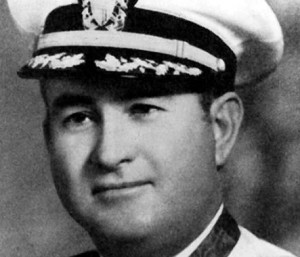
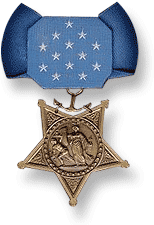
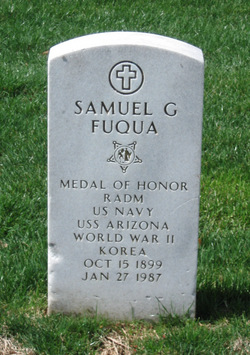 Missouri-born Samuel Fuqua had a front row seat to the devastation at Peal Harbor from aboard USS Arizona, a battleship that was heavily bombed during the first wave of the attack. The 42-year-old lieutenant commander was having breakfast when the ship’s air raid sirens first sounded around 7:55 a.m. He immediately rushed to the quarterdeck, only to be strafed by enemy fire and then knocked out cold when a bomb fell just feet away from him. Though dazed, Fuqua jumped to his feet after regaining consciousness and began directing firefighting operations. Moments later, he became the Arizona’s senior surviving officer after another bomb detonated the ship’s ammunition magazine, killing more than 1,000 men. As burned and maimed sailors poured onto the deck, Fuqua ignored gunfire from passing aircraft and calmly led efforts to evacuate his sinking ship. “I can still see him standing there,” Arizona crewman Edward Wentzlaff later remembered, “ankle deep in water, stub of a cigar in his mouth, cool and efficient, oblivious to the danger about him.” Fuqua was among the last men to abandon ship. He and two fellow officers then commandeered a boat and braved heavy fire while picking up survivors from the fire-streaked waters. He went on to win the Medal of Honor for his actions at Pearl Harbor, and was later promoted to rear admiral upon his retirement from the Navy in 1953. Samuel Fuqua died January 27, 1987, age 87, in Decatur, Georgia and was buried in Arlington National Cemetery in Arlington, Virginia. His grave can be found in section 59, lot 485
Missouri-born Samuel Fuqua had a front row seat to the devastation at Peal Harbor from aboard USS Arizona, a battleship that was heavily bombed during the first wave of the attack. The 42-year-old lieutenant commander was having breakfast when the ship’s air raid sirens first sounded around 7:55 a.m. He immediately rushed to the quarterdeck, only to be strafed by enemy fire and then knocked out cold when a bomb fell just feet away from him. Though dazed, Fuqua jumped to his feet after regaining consciousness and began directing firefighting operations. Moments later, he became the Arizona’s senior surviving officer after another bomb detonated the ship’s ammunition magazine, killing more than 1,000 men. As burned and maimed sailors poured onto the deck, Fuqua ignored gunfire from passing aircraft and calmly led efforts to evacuate his sinking ship. “I can still see him standing there,” Arizona crewman Edward Wentzlaff later remembered, “ankle deep in water, stub of a cigar in his mouth, cool and efficient, oblivious to the danger about him.” Fuqua was among the last men to abandon ship. He and two fellow officers then commandeered a boat and braved heavy fire while picking up survivors from the fire-streaked waters. He went on to win the Medal of Honor for his actions at Pearl Harbor, and was later promoted to rear admiral upon his retirement from the Navy in 1953. Samuel Fuqua died January 27, 1987, age 87, in Decatur, Georgia and was buried in Arlington National Cemetery in Arlington, Virginia. His grave can be found in section 59, lot 485
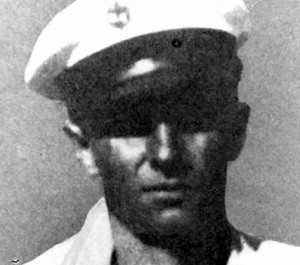
 Around the same time Arizona was being bombed, the training and target ship USS Utah was rocked by two torpedo strikes from Japanese aircraft. The aging vessel soon began to list to one side as water flooded into its hull. Inside the boiler room, Chief Watertender Peter Tomich ordered his crew to abandon ship. After ensuring that his men had escaped their engineering spaces, the Austro-Hungarian immigrant and World War I veteran returned to his post and single handedly secured the boilers, preventing a potential explosion that would have claimed many lives. USS Utah rolled over and sank just minutes later. Fifty eight men—Tomich, among them—went down with the ship. The 48-year-old was posthumously awarded the Medal of Honor for his lifesaving actions, but in an unusual twist, the Navy was unable to locate any of his family members. His award went unclaimed for nearly 65 years until 2006, when it was finally presented to a relative during a ceremony in Split, Croatia.
Around the same time Arizona was being bombed, the training and target ship USS Utah was rocked by two torpedo strikes from Japanese aircraft. The aging vessel soon began to list to one side as water flooded into its hull. Inside the boiler room, Chief Watertender Peter Tomich ordered his crew to abandon ship. After ensuring that his men had escaped their engineering spaces, the Austro-Hungarian immigrant and World War I veteran returned to his post and single handedly secured the boilers, preventing a potential explosion that would have claimed many lives. USS Utah rolled over and sank just minutes later. Fifty eight men—Tomich, among them—went down with the ship. The 48-year-old was posthumously awarded the Medal of Honor for his lifesaving actions, but in an unusual twist, the Navy was unable to locate any of his family members. His award went unclaimed for nearly 65 years until 2006, when it was finally presented to a relative during a ceremony in Split, Croatia.
![]()

![]() Army Air Corps pilots George Schwarz Welch and Kenneth MarlarTaylor spent the evening before the Pearl Harbor attack attending a formal dance and playing poker until the wee hours of the morning. They were still sleeping off their night of partying when they were awakened around 8 a.m. by the sound of exploding bombs and machine gun fire. Not wanting to miss out on a fight, the pair threw on their tuxedo pants and sped to Haleiwa airfield in Taylor’s Buick, dodging strafing Japanese planes along the way. Just minutes later, they became the first American pilots to get airborne after they took off in their P-40 fighters. Welch and Taylor went on to wage a lonely battle against hundreds of enemy planes. They even landed at Wheeler airfield at one point and had their ammunition replenished before rejoining the fray. By the time the attack ended, the second lieutenants had shot down at least six fighters and bombers between them. Both were awarded the Distinguished Service Cross for their high flying exploits, and Taylor was given a Purple Heart for a shrapnel wound he received when his P-40 was struck by machine gun fire.
Army Air Corps pilots George Schwarz Welch and Kenneth MarlarTaylor spent the evening before the Pearl Harbor attack attending a formal dance and playing poker until the wee hours of the morning. They were still sleeping off their night of partying when they were awakened around 8 a.m. by the sound of exploding bombs and machine gun fire. Not wanting to miss out on a fight, the pair threw on their tuxedo pants and sped to Haleiwa airfield in Taylor’s Buick, dodging strafing Japanese planes along the way. Just minutes later, they became the first American pilots to get airborne after they took off in their P-40 fighters. Welch and Taylor went on to wage a lonely battle against hundreds of enemy planes. They even landed at Wheeler airfield at one point and had their ammunition replenished before rejoining the fray. By the time the attack ended, the second lieutenants had shot down at least six fighters and bombers between them. Both were awarded the Distinguished Service Cross for their high flying exploits, and Taylor was given a Purple Heart for a shrapnel wound he received when his P-40 was struck by machine gun fire.
George Welsh
 died following a crash in a test flight in a North American F-100 Super Sabre on 12-10-1954, age 36. Kenneth Taylor
died following a crash in a test flight in a North American F-100 Super Sabre on 12-10-1954, age 36. Kenneth Taylor 

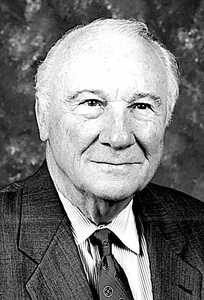 after 27 years of active duty, he retired as a colonel in 1967, and soon started as the Assistant Adjutant General for the Alaska Air National Guard, retiring as a Brigadier General in 1971. He died age 86 on 25-11-2006 in Tuczon Arizona.
after 27 years of active duty, he retired as a colonel in 1967, and soon started as the Assistant Adjutant General for the Alaska Air National Guard, retiring as a Brigadier General in 1971. He died age 86 on 25-11-2006 in Tuczon Arizona.











Leave a Reply